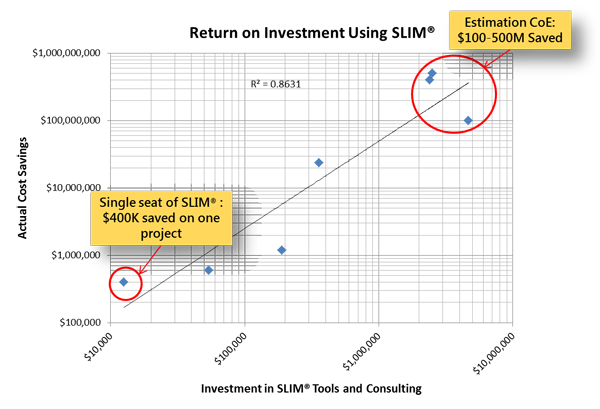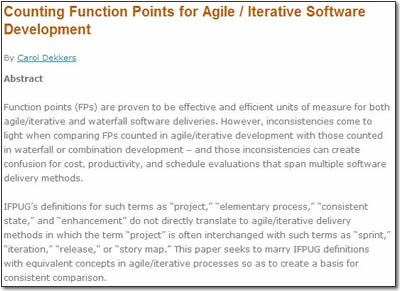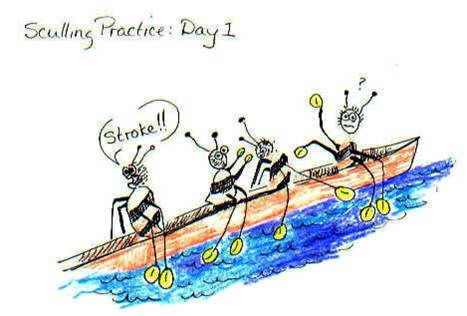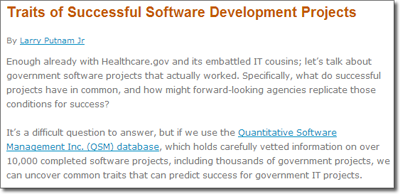7 Reasons Why Use of Parametric Software Estimation is a No-Brainer
Client organizations who are considering investing in SLIM® (a top-down, scope-based, parametric software estimation tool) often ask us for return on investment (ROI) case study examples which we gladly provide to help them with their business case. However, one question that has never been asked but I have always wondered is: does ROI accelerate with increased investment or does it follow the law of diminishing returns?
To answer this question, we looked at seven software estimation ROI case studies that included a variety of small, medium and large clients, from a single seat of SLIM all the way up to an enterprise Estimation Center of Excellence (ECoE).

On the above chart we plotted the investment in SLIM tools and consulting on the X axis vs. the return (actual cost savings) on the Y axis for each case study using a logarithmic scale. We then drew a trend line through the data points.
Following the trend line, small engagements (~$30K) had an average ROI of more than 13:1. Medium engagements (~$300K) had an average ROI of 33:1. Large ECoE engagements ($3M) had an average ROI of 67:1. So not only is the ROI compelling, but it also accelerates with increased investment.
The actual cost savings (return) as reported by, or observed while working with, our clients include:



 A
A 
 Television has done a fine job of glamorizing the job of an investigator. Whether you fancy the classic Sherlock Holmes, the affable Colombo, or even perhaps enjoy the suspense associated with cracking the case on television shows like “The First 48,” Hollywood has tried to make us believe the search for clues is always exciting. However, those who have searched thousand row spreadsheets for
Television has done a fine job of glamorizing the job of an investigator. Whether you fancy the classic Sherlock Holmes, the affable Colombo, or even perhaps enjoy the suspense associated with cracking the case on television shows like “The First 48,” Hollywood has tried to make us believe the search for clues is always exciting. However, those who have searched thousand row spreadsheets for